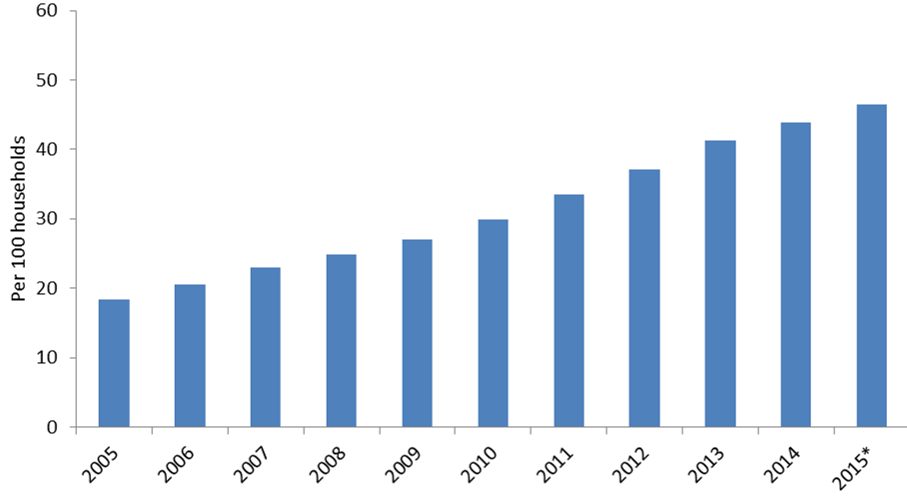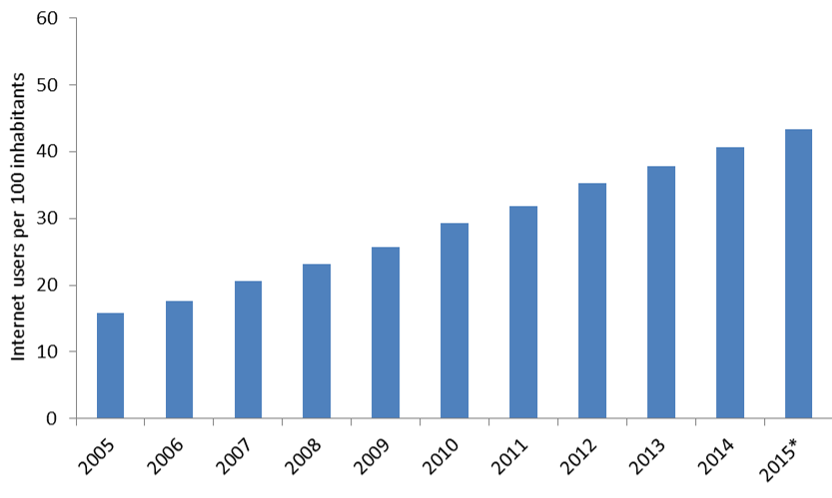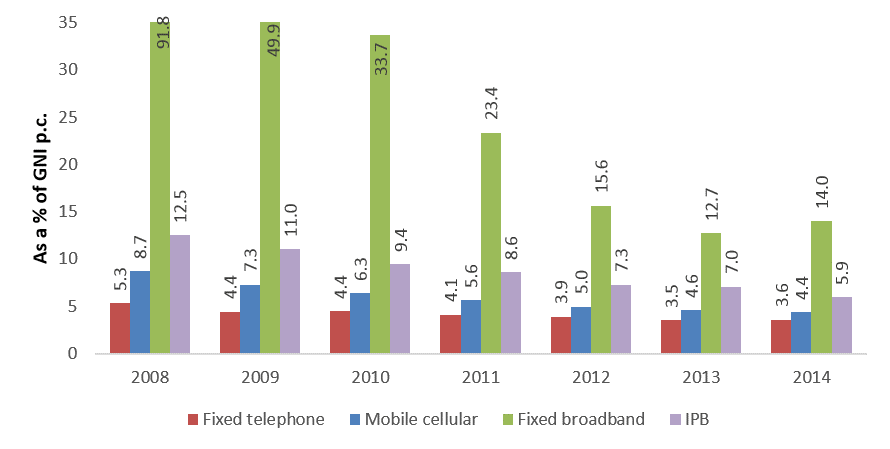Enabling and fostering access to and increased use of ICTs
| Target 1.1: Worldwide, 55 per cent of households should have access to the Internet by 2020 |
| Target 1.2: Worldwide, 60 per cent of individuals should be using the Internet by 2020 |
Target 1.3: Worldwide, telecommunications/ICTs should be 40 per cent more affordable by 2020 |
Target 1.1: Worldwide, 55 per cent of households should have access to the Internet by 2020 /
Target 1.2: Worldwide, 60 per cent of individuals should be using the Internet by 2020
 |  |
Note: * Estimate
Source: Measuring the Information Society Report 2015 - ITU
Currently available data illustrating the development of this target show a figure for household Internet access of 43.9 per cent in 2014, rising to an estimated 46.4 per cent in 2015.
Data illustrating the development of this target show a figure for Internet usage of 40.6 per cent in 2014, rising to an estimated 43.4 per cent in 2015. The increasing deployment of wireless-broadband networks in rural areas of developing countries and the displacement of feature phones by smartphones are expected to accelerate the pace of growth in this indicator in developing countries.
Target 1.3: Worldwide, telecommunication/ICT should be 40 per cent more affordable by 2020
The ICT Price Basket (IPB) and sub-baskets, worldwide, 2008-2014

Source: Measuring the Information Society Report 2015 - ITU
Looking at the evolution of the global level for the fixed-telephone, mobile-cellular and fixed-broadband sub-baskets over the period since collection of those data began, there was a marked drop in fixed-broadband prices over the period 2008-2012 (-36 per cent CAGR). Price reductions in fixed-broadband services saw a slowdown between 2012 and 2014 (-5 per cent CAGR for the two years), despite the fact that average fixed-broadband prices are still relatively unaffordable in several developing countries. Fixed-telephone and mobile-cellular service prices also fell during the period 2008-2014, albeit at slower rates (-6 per cent CAGR and-11 per cent CAGR, respectively) than fixed broadband given the initial lower levels of fixed-telephone and mobile-cellular prices.
Data concerning mobile-broadband prices for 2013 and 2014 show that there was a decrease in all four of the sub-baskets used to assess mobile-broadband prices. Prices in all four cases remain substantially lower, in relation to monthly GNI p.c., in developed than in developing countries, but have fallen most markedly in LDCs.
The cost of a mobile-cellular service corresponded on average to 5.0 per cent of GNI p.c. in 2012, and fell to 4.4 per cent of GNI p.c. in 2014. Considering that by 2020 the cost of the service should, according to the Connect 2020 target, correspond to 3.0 per cent of GNI p.c., this means that 29 per cent of the price reduction required to meet the target has already been achieved in the period 2012-2014. The progress made towards achieving the target
is somewhat lower for the fixed services: 26 per cent for fixed broadband and 21 per cent for fixed telephony. Significant progress has already been achieved in terms of improving the affordability of these three services, but sustained regulatory and policy attention will be required in the coming years to keep prices on track to meet the target. Concerning mobile broadband, the decrease in prices recorded is remarkable.